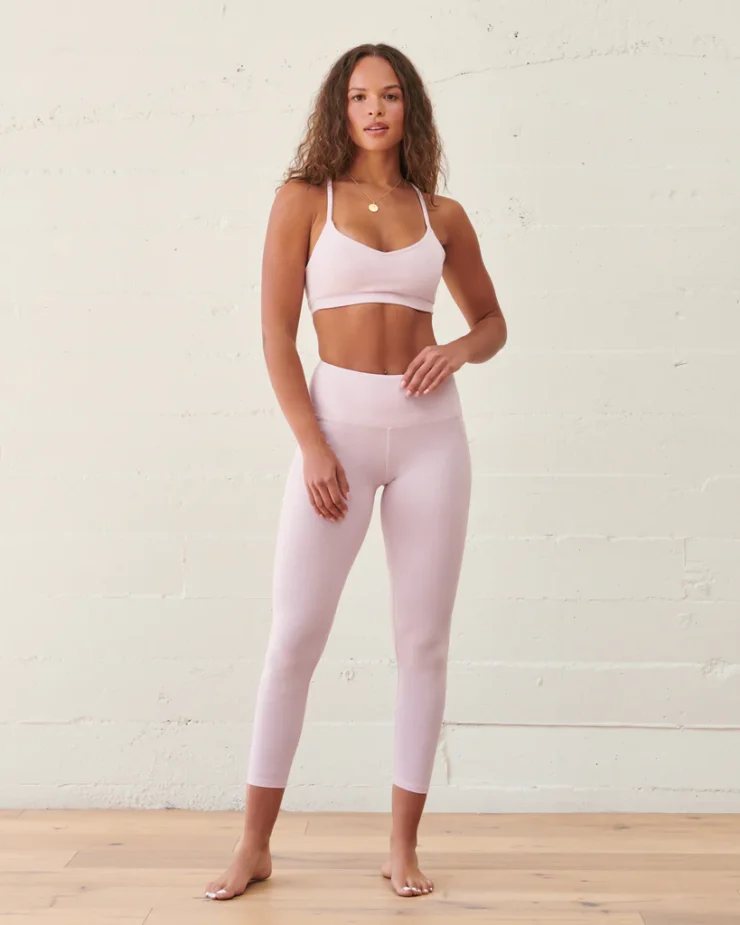Table of Contents
There are many difficulties worldwide due to climate changes, deforestation, pollution due to overuse of plastic items, coral reefs disappearing, and all life forms connected to it. Watching the fashion industry and seeing glamorous people, everyone thinks no problems exist here. But even in the fashionable garment industry, problems contributing to ecological issues do affect humans. A new trend known as sustainable fashion is there, which addresses points pertaining to the garment industry.
Sustainable activewear is a part of this industry. It is a type of cloth designed that is friendly to mother nature and has a long life. These clothes get made from salvage plastic, hemp, bamboo, or organic cotton. These brands create fashions that generate goodwill for humans and nature, thus reducing the adverse effect on our planet’s climate. It ensures a process that will never leave a negative footprint. Apart from the benefits of sustainable activewear, find here leggings, shorts, tops, playsuits, jumpsuits, and other essentials used for sports and other physical activities.
Sustainable Activewear Benefits

Wearing sustainable clothes does state a new trend, but it gives a good feeling knowing it gets made from recycled and organic fabrics, which are suitable as the originals and come with an eco-friendly tag. A few of the benefits include,
Saves Natural Resources
Sustainable activewear production does not harm the environment. Simultaneously, traditional methods use natural resources, harmful pesticides, and many chemicals to produce clothes.
Clothes made using recycled material use less than 70 % of the power compared with the original fabric’s production. These recycled clothes are feasible, and they also address the problems regarding waste management.
Reduces Carbon Footprint
The fashionable garment industry generally emits tons of greenhouse gases yearly, increasing global warming. It is because many clothes are made using petroleum-based products and also fossil-fuel-based. It includes made from nylon, and other polyester fabrics, which require more energy for their production when compared with sustainable or organic wearables.
Sustainable activewear restricts crude oil used as base materials, thus reducing carbon footprint to a great extent. They use natural and recycled materials that do not need chemical treatment and require significantly low water and energy compared to traditional clothes.
Workers Have Safe Working Conditions

Slavery was in ancient days, people say. Still, many garment workers in the garment sector work unlimited hours without regard for their safety or their health.
They are at the receiving end of abuses that are both physical and verbal, which is pretty much prevalent in most companies across the world. Many docuseries have emerged regarding the injustices done to workers in these industries.
This ethical ecology brand promotes civilized conditions at work, along with workers getting fair wages. These activewear brands produce ethical wear that provides safe conditions at work. Production of organic activewear clothes protects farmers growing cotton from harmful chemical pesticides and chemical fertilizers.
All should feel good about their clothes, including knowing the work conditions of the workers that make these clothes. The workers’ welfare should get considered for supporting fair labor practices.
Animal Lives Get Saved
The garment industry does kill animals to maintain their fashion. Many misunderstand, thinking leather is just a by-product of the meat industry. As per research, the leather industry is butchering more than 400 million animals a year.
Sustainable wear lets go of this inhuman brutality by saving the animal’s life. In some cases, trash recovered from the ocean floors gets converted into polyester, producing sneakers made from plants, silk clothes created from primary yeast, and the new trend of vegan wool.
Apart from this, leather substitutes get produced from the leaves left after the pineapple harvest, thus using the by-product waste and protecting animal life.
Less Usage Of Water
A lot of water gets used for producing garments traditionally. Water gets used for dyeing garments and other processes while creating clothes.
In traditional methods, almost two thousand liters of water get used to make a t-shirt. The dresses, made from these organic cotton and other materials, help decrease water usage and lower pollution.
Cotton plantation depends on water availability for growth, and it gets planted only in hot and dry regions where aqua is in short supply. Growing organic cotton will help reduce water consumption by ninety-one percent, which is a miracle compared to traditional cotton farming methods. But only one percent of present-day cotton is organic, which is the saddest part to digest.
It is mainly because of the cost involved in purchasing organic seeds, other materials, and machines that farmers use when enlarging organic crops.
Even fabrics like linen, hemp, and recycled cotton need very little water in their production cycle.
High-Quality Clothes

All sustainable activewear clothes are of high quality, and they care for the environment. Clothes made from recycled polyester and polyamide have the quality of original materials.
As more and more people realize the benefits of sustainable wear, more companies will start producing it, which will pave an essential path for waste management.
These clothes are durable and will withstand the wear and tear of work and sports-related issues, saving customers money in the long run as it prevents textile waste from being used in landfills.
These clothes are a superior product and eco-friendly. It guarantees no need to buy new clothes for many coming years. If these clothes get old and worn after years of usage, they could get recycled into new clothes.
Healthy For People
Almost all garments, be it sportswear or any type, face enormous chemical processes before reaching customers. Over eight thousand synthetic chemicals get used during the dyeing, bleaching, and processing of wet garments.
These chemicals cause many diseases; in some cases, deaths occur among farmers, and children are born with congenital disabilities.
The effect of the chemical stays with the cloth, and sometimes the skin absorbs it, including the chemicals in it. But people wearing sustainable wear never face this scenario.
Brings A Change
Sustainable clothes bring about a sustainable future for society and people in general. Due to this change, many recycled and organic materials get used for manufacturing clothes, thereby reducing pressure on the natural resources available here on Earth and restoring the balance between people and the planet concerning fashion.

Conclusion
Clothing plays a vital role in everyone’s life. Even by not controlling the conditions in the fashion industry, it is possible to educate people and raise awareness among the public about workers involved in this industry, along with the production methods that will impact people and nature.
Sustainable clothes are made with organic cotton, hemp, and recyclable materials, which don’t cause adverse effects on the planet’s environment.
They are ecology-conscious business models and leave less carbon footprint, and most of these companies run their factories on renewable energy and create less wastage.

